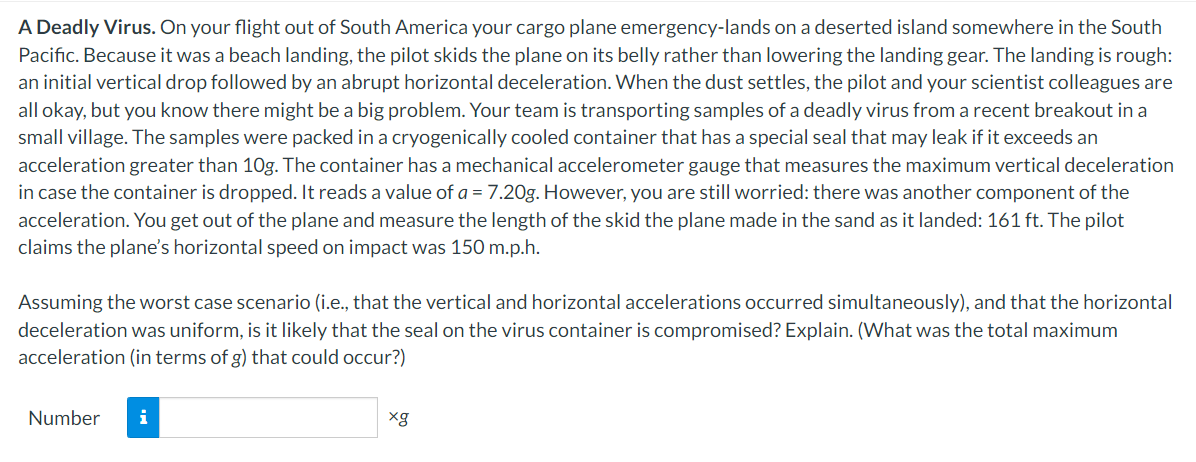A Deadly Virus. On your flight out of South America your cargo plane emergency-lands on a deserted island somewhere in the South Pacific. Because it was a beach landing, the pilot skids the plane on its belly rather than lowering the landing gear. The landing is rough: an initial vertical drop followed by an abrupt horizontal deceleration. When the dust settles, the pilot and your scientist colleagues are all okay, but you know there might be a big problem. Your team is transporting samples of a deadly virus from a recent breakout in a small village. The samples were packed in a cryogenically cooled container that has a special seal that may leak if it exceeds an acceleration greater than 10g. The container has a mechanical accelerometer gauge that measures the maximum vertical deceleration in case the container is dropped. It reads a value of a = 7.20g. However, you are still worried: there was another component of the acceleration. You get out of the plane and measure the length of the skid the plane made in the sand as it landed: 161 ft. The pilot claims the plane's horizontal speed on impact was 150 m.p.h. Assuming the worst case scenario (i.e., that the vertical and horizontal accelerations occurred simultaneously), and that the horizontal deceleration was uniform, is it likely that the seal on the virus container is compromised? Explain. (What was the total maximum acceleration (in terms of g) that could occur?) Number i xg
Displacement, Velocity and Acceleration
In classical mechanics, kinematics deals with the motion of a particle. It deals only with the position, velocity, acceleration, and displacement of a particle. It has no concern about the source of motion.
Linear Displacement
The term "displacement" refers to when something shifts away from its original "location," and "linear" refers to a straight line. As a result, “Linear Displacement” can be described as the movement of an object in a straight line along a single axis, for example, from side to side or up and down. Non-contact sensors such as LVDTs and other linear location sensors can calculate linear displacement. Non-contact sensors such as LVDTs and other linear location sensors can calculate linear displacement. Linear displacement is usually measured in millimeters or inches and may be positive or negative.

Step by step
Solved in 2 steps






